Alexa, play “It’s The Most Wonderful Time of the Year.”
Little is more exciting than the prospect of… well, your favorite teams’ prospects. The unknown future, the upside, the potential stardom is one of the more enjoyable sides to hockey to follow. Yet, for teams that are in contention, prospects tend to get overlooked, oftentimes simply because contenders’ prospect pools can be a bit barren. Teams in “win-now” mode tend to go all-in when they think they are ready for a Cup run, and that often includes trading a large chunk of their notable prospects for pieces that help in the immediate future.
However, as I mentioned in the conclusion of my last piece, the Carolina Hurricanes are in a very special spot: not only is the team sitting near the top of the league with legitimate Stanley Cup aspirations, but the prospect cupboard is extremely well-stocked, too. They are in a position where the could find a deal they like at the trade deadline, add a needle-moving piece, and would still likely have the prospect depth to rank as one of the best throughout the league. The front office has done a remarkable job of putting the team in a great position in the present and future, both.
A real feather in the scouting department’s cap is a whopping 10 players being selected to their countries’ rosters for the 2022 World Junior Championships (WJC) in Alberta. That is the most of any team this year, and ties the record for the most players ever sent by one NHL team to a single WJC, ever.
If you haven’t paid much attention to prospects in Hurricanes Land this year, not to worry, we have you covered. We’re going to run through the six countries fans should have a rooting interest in (beyond simply “I live in this country,” of course), and take a look at each of the 10 Carolina prospects headed to the tournament this year. The WJC is one of the best chances to check in and see where some of tomorrow’s stars are in their development and how they stack up against their peers, so let’s get ready for the action.
Team USA
We’ll start with what is “home” for a majority of ‘Canes fans, and the country that also happens to be the most recent WJC roster to be finalized, the United States. The Americans will be looking to defend their title after now-Anaheim Ducks star Trevor Zegras led the team to gold, taking down Team Canada by a score of 2-0 in the final game a year ago.
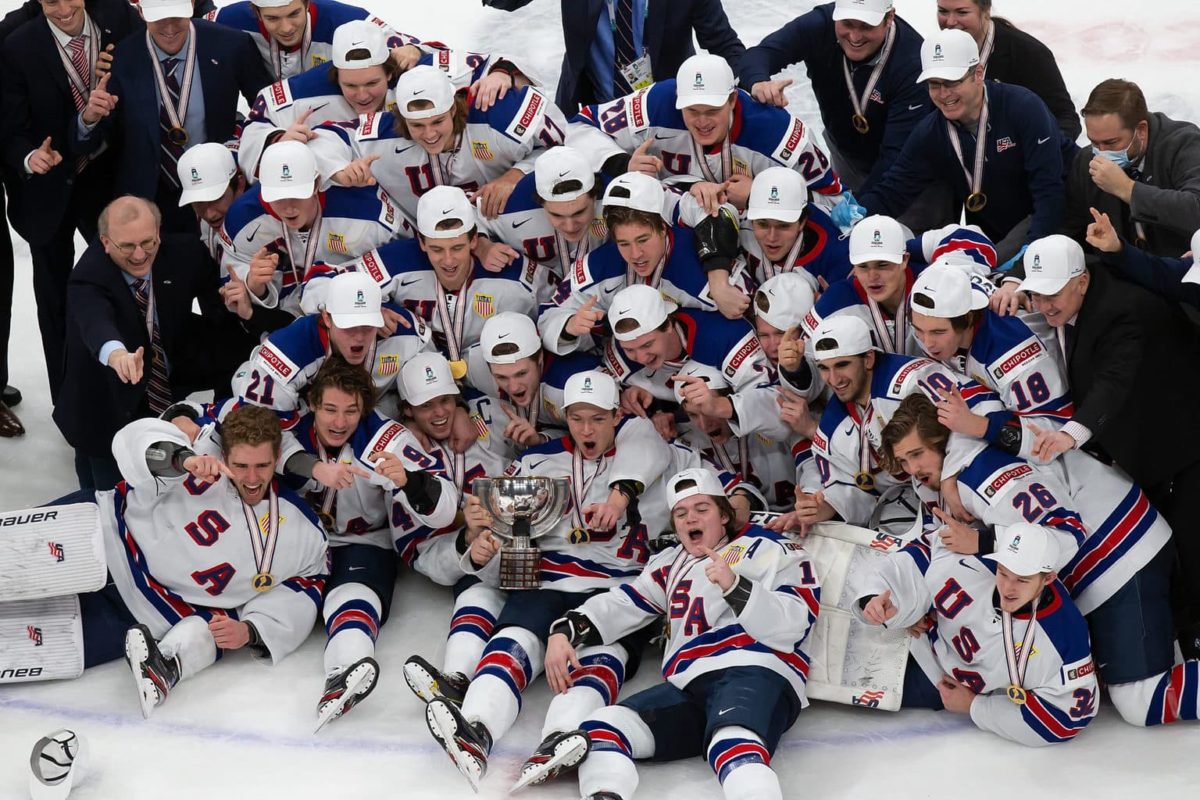
This year the team will be stacked once again, as they look to win back-to-back gold medals for the first time. The roster is loaded with 12 players selected in the first two rounds of the NHL draft, including 2021 second-overall pick Matt Beniers (Seattle) and 2020 fifth-overall pick Jake Sanderson (Ottawa). The group of skaters is extremely talented, but will need new faces to step up. New York Rangers winger Brett Berard and Los Angeles Kings defenseman Brock Faber are the top returning scorers with five points apiece, while many of the top producers, such as Arthur Kaliyev, Alex Turcotte, and the 2021 tournament MVP, Zegras, have all aged out.
The defense appears to be the strength of the group, with three returning players — Sanderson, Faber, and Tyler Kleven (Ottawa) — in addition to 2021 fourth-overall pick Luke Hughes (New Jersey). One perceived question mark is in net, where Chicago second-rounder Drew Commesso is expected to be leaned on. The 6-foot-2 goalie hasn’t replicated last year’s success behind a struggling Boston University team this season, but with two 17-year-olds backing him up, the US will need him to be the guy.
Scott Morrow
The Americans will have just one Hurricanes prospect, and he’ll be battling for playing time in perhaps the most competitive area of the roster. Carolina’s top pick from the 2021 Draft, selected in the second round, 40th overall, Morrow has come on extremely strong for UMass in his first year of NCAA hockey. The rangy, right-shot defenseman has scored at a point-per-game clip, with six goals and nine assists in 15 games played as a freshman.
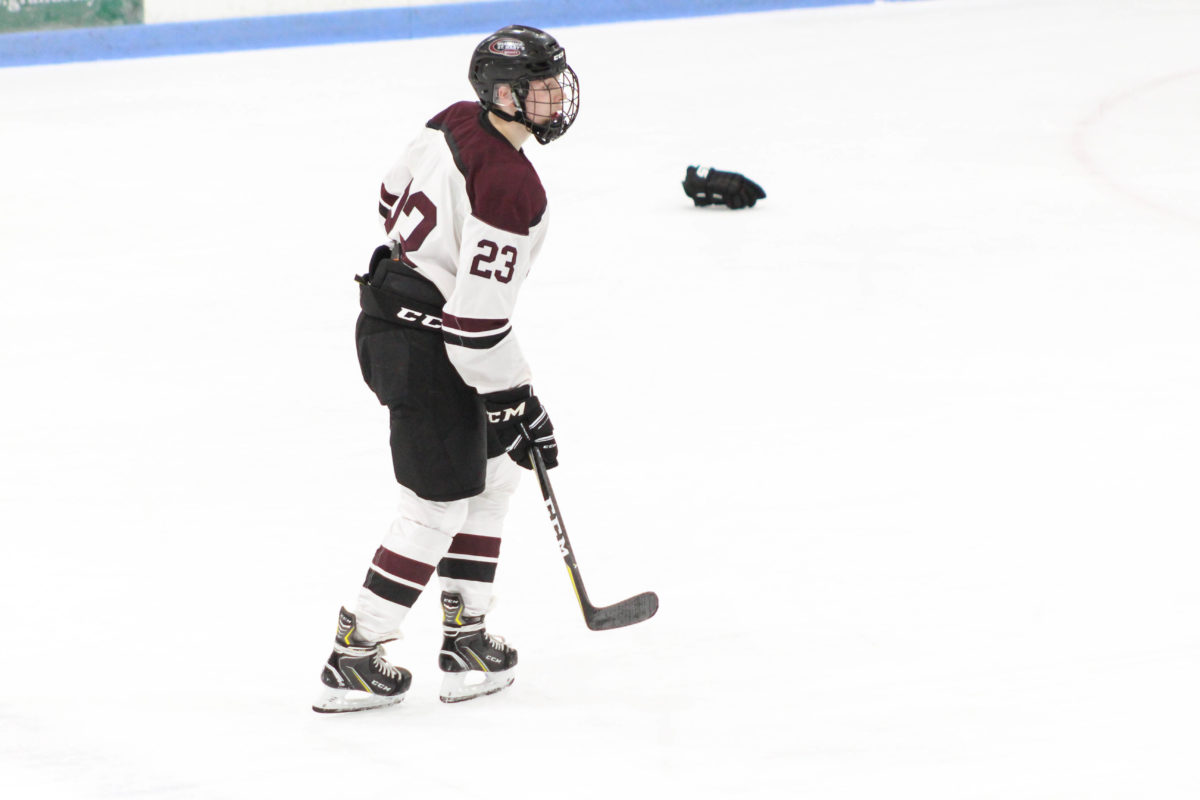
Morrow has big-time potential, but is still pretty raw. With four spots effectively secured between the aforementioned defensemen, he is likely to be battling for a third-pairing role. His skating and offensive ability are definitely working in his favor, but it may come down to what general manager John Vanbiesbrouck and head coach Nate Leaman want in those spots. It’s entirely plausible that Morrow is asked to be a power-play quarterback, but Hughes and Sanderson both have good arguments to do so as well — but with more even-strength responsibilities. Still, the WJC usually lends itself to skilled games in open ice, and Morrow can really thrive in that environment.
Team Canada
Moving on to the United States’ neighbors to the north, the Canadians will, per usual, be one of the favorites to take home the gold medal. After falling in the gold-medal game in 2021, they will be looking to bounce back with 2021 first-overall pick Owen Power (Buffalo) leading the way, along with five other top-10 NHL draft picks. Additionally, Canada will roster two players with great odds to be the next two first-overall picks in Shane Wright (2022) and Connor Bedard (2023). The latter is the first 16-year-old to make Team Canada since Connor McDavid.
The Canadian top six is going to be lethal, with four of the aforementioned top-10 picks residing there in Kent Johnson (Columbus), Mason McTavish (Anaheim), Dylan Guenther (Arizona), and one of the three returning players on the roster, Cole Perfetti (Winnipeg). The defense is loaded with star power as well, even behind Power, and the goalie battle should be interesting between 2020 silver medalist Dylan Garand (New York Rangers) and towering 2021 first-round pick Sebastian Cossa (Detroit).
Ronan Seeley
Once again, the Hurricanes send just one blueliner to Canada, but he is a defenseman that has turned a lot of heads over the last year and a half. Selected in the seventh round of the 2020 Draft, I’m not sure I remember a player drafted that late being signed to their entry-level deal as quickly as the Hurricanes did with Seeley. He played just one season — a shortened, 23-game season — with the Everett Silvertips of the Western Hockey League (WHL) before Carolina saw enough to want to sign him in September.
After being known mostly for his elite skating ability, sound defensive responsibility, and high-end hockey sense, Seeley’s game in the offensive end has really taken off during the 2021-22 season. He currently has six goals and 16 assists in 24 games, with his 22 points good for seventh in the WHL amongst defensemen. The Canada defense is loaded, and all eight players on the blue line shoot left-handed. If Seeley can play his off-side proficiently, it could give him a leg up, but look for him to get some ice time regardless with his steady, versatile game that can contribute in all situations.
Team Finland
Our next stop is the Hurricanes’ unofficial favorite scouting location, Finland. It almost feels surprising that the team only has two players on the Finnish WJC roster, doesn’t it?
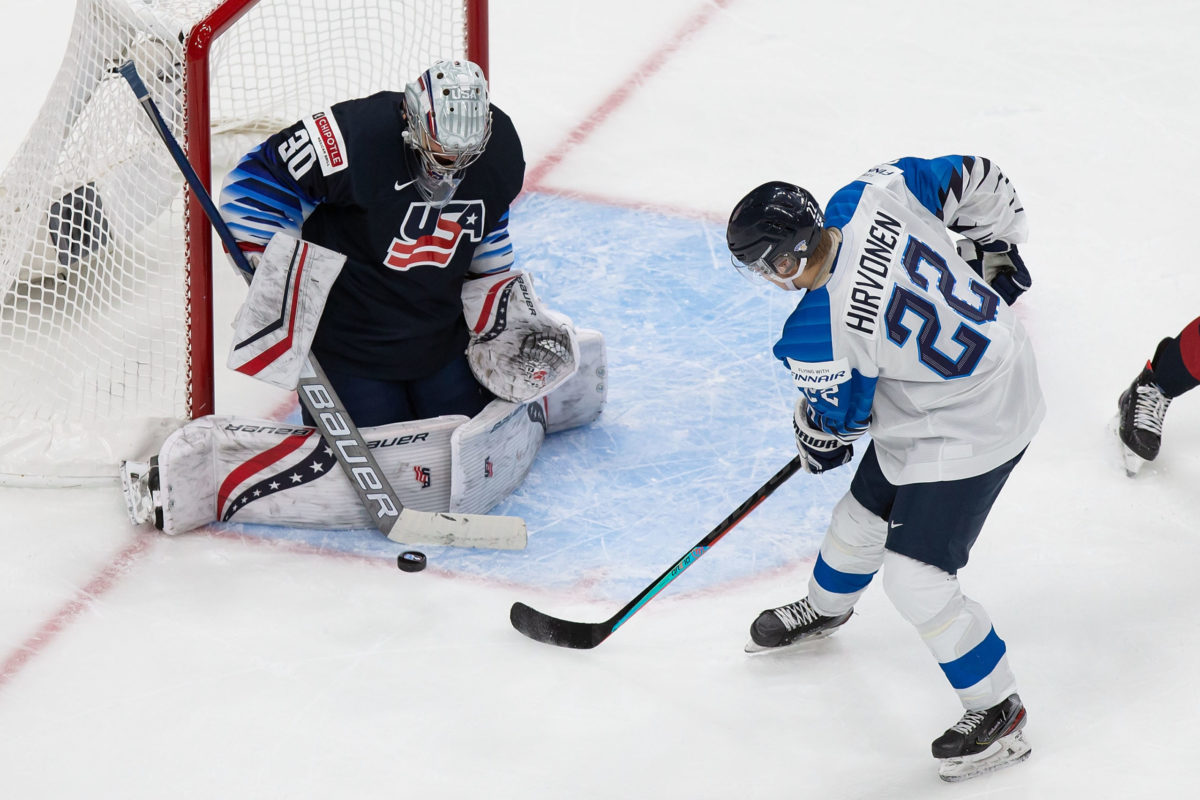
There is a ton of speed and skill throughout their roster, both on forward and defense. The two players the Hurricanes are sending for Finland absolutely fit that mold. While the Finns don’t have much size — especially now that Aatu Raty (New York Islanders) will not play — their lineup is stocked with dynamic players. They are likely Canada’s biggest challenger in Group A, but goalie Joel Blomqvist (Pittsburgh), who has an absurd .960 save percentage (SV%) and 0.73 goals-against average (GAA) in eight Liiga games played, will probably need to continue that incredible play for Finland to medal.
Related: 2022 World Junior Championship Team Finland Final Roster
Aleksi Heimosalmi
The second of three second-round picks for the Hurricanes in 2021, getting drafted after Morrow but before the next player we’ll talk about, Heimosalmi is the only 2003 birthdate on an impressive Finnish blue line. His stat line of just one assist in 23 games is not indicative of his ability, as a very young 18-year-old (doesn’t turn 19 until May) playing in Liiga at all is impressive, but his ice time has not been particularly high.
A small, puck-moving defenseman, Heimosalmi is in the same vein as a lot of his peers on the Finland blue line, which sees just one player check in over 6-foot. The group will be anchored by Eemil Viro (Detroit) and Topi Niemela (Toronto), two high-end NHL prospects, but Heimosalmi has a chance to push for a second- or third-pairing slot and help produce offense from the back end. In a tournament like this one, which is less about systems and team play due to the lack of practice time together, his skating and offensive capability gives him a great chance to shine.
Ville Koivunen
Quite possibly the player I’m most excited to watch at this tournament, if I had to bet, I would say the Karpat (Liiga) forward is going to end up being Carolina’s best player from the 2021 Draft class. Second-round picks from Finland tend to get overhyped in the Carolina organization, but I think Koivunen has a real chance to be a much closer thing to “another Sebastian Aho” than his predecessors, Eetu Luostarinen and Janne Kuokkanen, did.
Koivunen has some of the best hockey sense in the Carolina system, as his ability to read and react is a cut above most players his age. He has a complete offensive toolkit along with it, equipped with high-end vision, shooting ability, and stickhandling. A lot of that is really comparable to Aho at this age; he never had some defining tool that made him a lock to be an NHL superstar, he simply didn’t have many holes in his game. It wasn’t until he got to the NHL that he added another step (or four) to become the blazing-fast skater he is now. But, although Koivunen’s nine goals and 19 points in 30 games don’t quite match Aho’s point-per-game production in his draft+1 year, he has legitimate top-six NHL potential and should end up being one of the top offensive producers for Finland at the WJC.
Team Russia
The most well-represented team at the WJC, three Hurricanes check in on the Russian roster. Team Russia will be looking to bounce back after falling to Canada in the 2021 Semifinal, then losing the bronze medal game to Finland. The team turned some heads in leaving three of their stateside prospects, each of whom seemed shoo-ins, off the roster, in Yan Kuznetsov, Daniil Gushchin, and Daniil Chayka.
The team will be led by Yaroslav Askarov, one of the top goaltender prospects in the world who was selected 11th overall in 2021 by the Nashville Predators. His numbers are down a bit in just five KHL games this year (.904 SV%, down from .951 last year), but his size, athleticism, and positioning still make him one of the favorites to win top goalie honors at the tournament. Winger Matvei Michkov, a candidate to push Bedard for the first-overall selection in 2023 who has already impressed in the KHL at age 17, and Danila Yurov, another potential NHL first rounder for 2022, are other marquee names to watch.
Nikita Guslistov
The youngest player to ever be named captain of his KHL team, Guslistov isn’t a flashy, super-skilled player, but he works hard, has some finishing ability, and can be counted on in all situations. Despite below-average size (5-foot-9, 170 pounds), he can check in pretty much anywhere in the lineup, but I’d expect him to be a third liner for Russia in the WJC.
After being passed over in his first year of eligibility in 2020, Gustlistov was selected in the seventh round, 209th overall in 2021. He has registered 15 points on eight goals and seven assists over the last two seasons (58 games) for his hometown team, Severstal, which is a solid total for a teenager in the KHL.
Alexander Pashin
One of the most fun players in the Carolina system, I’m less bullish than many Hurricanes fans are on Pashin’s NHL upside, but he could absolutely go off in a setting like this if he’s put in position to do so. I — like pretty much everyone else, since there often seems to be no rhyme or reason behind many of Russia’s decisions — have no idea how they will line up their roster, but the 2020 seventh rounder’s electric speed, ability to dangle in a phone booth, and wicked shot could easily lead to him being one of the team’s most prolific scorers at the tournament.
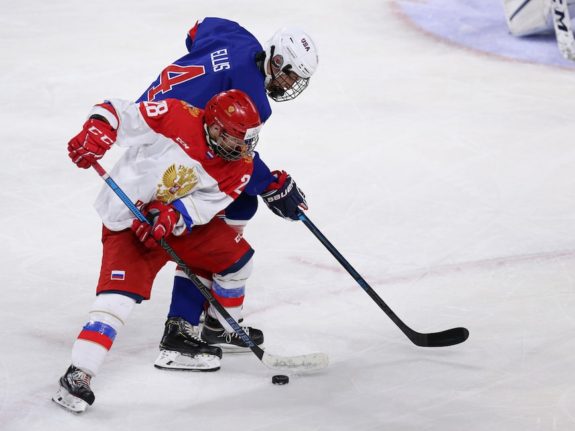
Pashin, who plays in Russia’s second-tier league (the VHL, effectively the Russian version of the AHL), is tied for second on his team, Toros Neftekamsk, with 13 goals in 24 games this year. The 19-year-old has all the skill in the world, but is a little rough around the edges as far as defensive and off-the-puck play go. He could be an absolute treat to watch later this month, though.
Vasili Ponomaryov
Lastly, 2021 WJC returnee Ponomaryov has a chance to be one of team Russia’s anchors down the middle. A do-it-all, complete centerman, the 2020 second-round pick had three goals and impressed on a regular basis in a bottom-six role at last year’s tournament. He should be on the second or third line this year, and has a chance to see his production blossom alongside the talented wingers that likely slots him between.
Ponomaryov is a lot like fellow Hurricanes prospect, Jack Drury, in that although neither have great size, both have elite work ethic and high-end hockey sense that allow them to make the right reads and be great positionally. He’s a bulldog in the corners and in puck battles as well, but has flashed more skill than I’ve expected almost every time I’ve seen him. After posting 11 points in 16 VHL games, and two more in 14 KHL games, it wouldn’t be a shock to see him have a bit of a coming out party at this year’s WJC.
Team Sweden
The last of the big five countries, Sweden’s relative lack of WJC success compared to their standards, despite the steady stream of big-time NHL talent they produce, is quite surprising. They haven’t won a gold medal at the WJC since 2012, and have medaled just four times in that span (three silvers, one bronze). This year’s team certainly has a chance, though the extremely difficult Group B they are slotted in won’t make things easy.
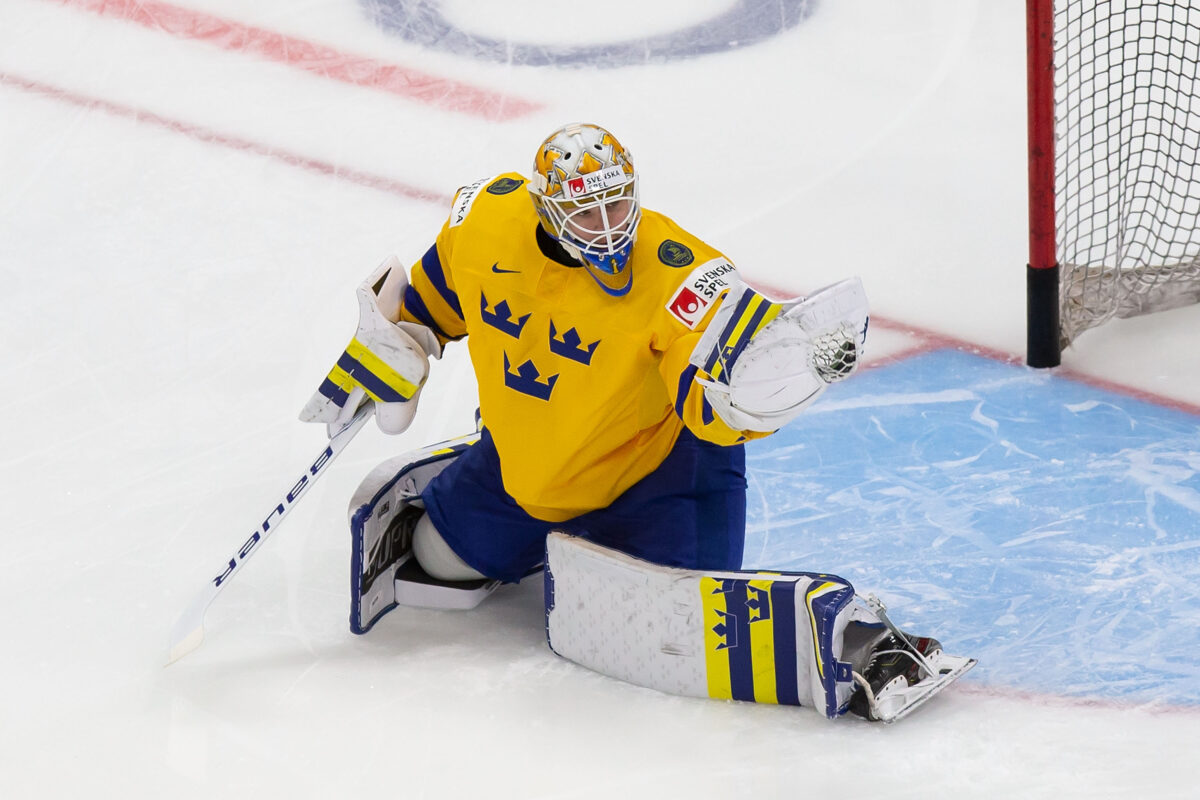
The forward group is anchored by two seventh-overall picks in William Eklund (San Jose, 2021) and three-time WJC attendee Alexander Holtz (New Jersey, 2020), but has plenty of talent beyond that top-tier one-two punch. Other first-round picks like Oskar Olausson (Colorado), Isak Rosen (Buffalo), and Fabian Lysell (Boston) will give them the depth to keep up offensively with any team in the tournament.
However, they also have one of the older and most talented blue lines at the tournament, with an especially dynamic top three in Helge Grans (Los Angeles), Emil Andrae (Philadelphia), and Simon Edvinsson (Detroit). They, along with one of the best goalie prospects in the world, Minnesota first-rounder Jesper Wallstedt, play just as large of a part in making this roster look complete, and like a legitimate gold-medal contender.
Joel Nyström
After being selected as an over-age, seventh-rounder, expectations were probably a bit low for Nyström. However, the smooth-skating, puck-moving defenseman has been excellent for Färjestad of the Swedish Hockey League (SHL), and has a chance to play alongside the aforementioned “big 3” of Sweden’s defense on one of the team’s top-two pairings.
Despite being undersized at just 5-foot-9, Nyström isn’t just an offensive-minded defenseman who can be a liability in his own end. Yes, he puts up points (four goals, 12 points in the SHL this year) with his excellent one-timer, good vision, and skating ability that allows him to join the rush easily, but he also uses that skating and his vision to aptly read how plays are developing and position himself well to break up opponents’ opportunities. He has good gap control, and battles very well for a player his size. The Hurricanes might have a seventh-round steal here, and it’ll be exciting to see how he matches up on the WJC stage.
Zion Nybeck
A lightning rod of skill, Nybeck is back for his second year at the WJC. Despite registering just one assist in his five games last season, he has a diverse offensive toolkit and is another player that could easily dominate in the WJC setting. He has quick hands and quick feet, competes hard, and has excellent finishing ability that could really flourish alongside some of the playmakers in Sweden’s top nine. The Hurricanes’ 2020 fourth-rounder has three goals and 11 points in 21 HockeyAllsvenskan (Sweden’s second-tier league) games in 2021-22.
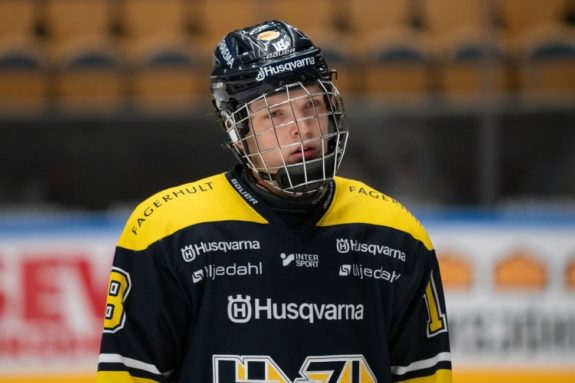
Like Nyström, Nybeck’s biggest drawback is his size and strength. He is known as an excellent forechecker because of his motor, and he has the “want” to battle in the dirty areas, but bigger defenders and centers are capable of eliminating him from board battles and taking away the puck. Luckily, the WJC isn’t the most physical setting in hockey, so there will be plenty of time and space. When Nybeck has those, good things tend to happen.
Team Germany
Finally, Germany is in the best shape it’s ever been as far as producing NHL talent. Moritz Seider and Tim Stützle are starring in the NHL before the age of 21, and last year the country put on a show with some talented breakout stars such as John Peterka and Lukas Reichel. Unfortunately, although both players were eligible to return this year, neither will. Both are enjoying fantastic seasons in the AHL, and after discussing with Team Germany management, decided opting out was best for their development.
Despite being without arguably it’s two best players, there is still talent on the German roster. They finished sixth at last year’s WJC, and behind a trio of impressive returning defensemen and Florian Elias, a center who registered four goals and nine points in five games at the 2021 tournament, they hope to continue being a factor.
Nikita Quapp
The Hurricanes’ Germany representative is Quapp, the 6-foot-3 netminder selected in the sixth round last July. I’m gonna be honest here — my experience watching the 18-year-old is extremely limited. He has size and seems well-positioned, but isn’t the most athletic goalie in the world. His numbers in the Deutsche Eishockey Liga (DEL) aren’t great, but he is the only U20 goalie to see time in the league (in fairness, his team, Krefeld, isn’t very good). I look forward to actually getting eyes on him at the WJC.
WJC Set to Kick Off Soon
The tournament is set to kick off at the end of the month, Dec. 26, and run through Jan. 5, when the gold medals will be awarded. All games will take place in Red Deer and Edmonton, Alberta, with a limited capacity allowed in the building (although that is subject to change with all the COVID-19 outbreaks occurring).
The 10 teams will be broken into two groups; Group A will consist of Canada, Finland, Germany, the Czech Republic, and Austria, while Group B will see the United States, Sweden, Russia, Slovakia, and Switzerland. The teams will then be re-seeded for the Quarterfinals, where the top four teams from each group will square off in a bracket-style schedule. The bottom team from each group will go to the relegation bracket.
There is obviously a ton to follow for Hurricanes fans, and, incidentally, this was a lot to cover here; if you made it this far, you are a trooper. But, watching these hungry, young players make a name for themselves on this stage makes it one of the best events in all of hockey in my opinion, so now that you’re familiar with the Hurricanes’ prospects attending (and their six teams, in general, to a small degree at least), hopefully you’re ready to watch the action.
With the NHL’s participation in the Olympics up in the air, hopefully this will provide you a nice substitute in the meantime. Enjoy the tournament!